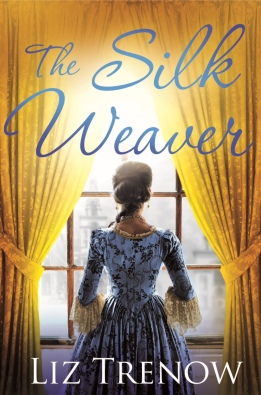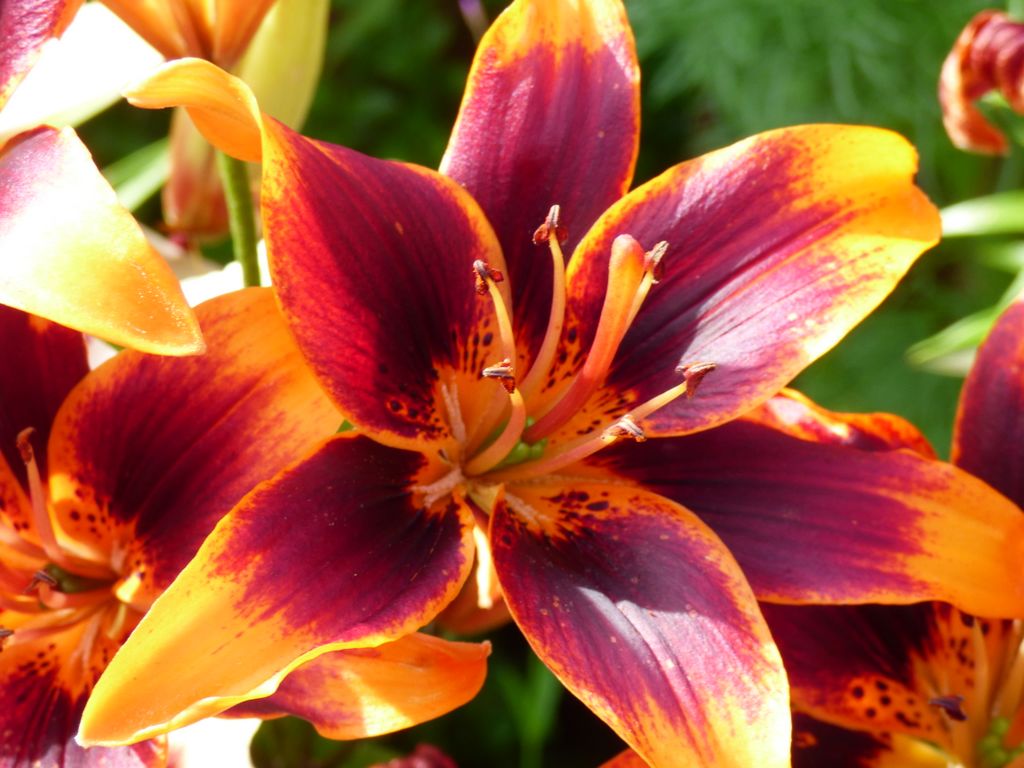
I love historical fiction so I’m delighted to be part of the launch celebrations for The SilkWeaver by Liz Trenow. The Silk Weaver is published today, 26th January 2017, by Pan Macmillan and is available for purchase in ebook and paperback by following the links here.
The Silk Weaver

A novel of illicit romance set against the world of the silk trade in London
Anna Butterfield moves from her Suffolk country home to her uncle’s house in London, to be introduced to society. A chance encounter with a local silk weaver, French immigrant Henri, throws her from her privileged upbringing to the darker, dangerous world of London’s silk trade. Henri is working on his ‘master piece’ to make his name as a master silk weaver; Anna, meanwhile, is struggling against the constraints of her family and longing to become an artist. Henri realizes that Anna’s designs could lift his work above the ordinary, and give them both an opportunity for freedom…
This is a charming story of illicit romance, set against the world of the burgeoning silk trade in eighteenth-century Spitalfields – a time of religious persecution, mass migration, racial tension and wage riots, and very different ideas of what was considered ‘proper’ for women.
An Interview with Liz Trenow
Welcome to Linda’s Book Bag Liz. Congratulations on your fourth book The Silk Weaver that is published today. Thank you so much for agreeing to answer some questions on my blog about your writing.
Firstly, please could you tell me a little about yourself?
I worked as a journalist with regional and national newspapers and on BBC radio and television news, before turning my hand to fiction rather late in life! I was born and brought up in Sudbury, Suffolk next to the mill which is the oldest family-owned silk weaving company in Britain and one of just three still operating today. I still live in East Anglia with my artist husband, we have two grown up daughters and, just this year, a granddaughter!
My first three books have also been published in a number of other countries and in translation: The Last Telegram, The Forgotten Seamstress (a New York Times bestseller) and The Poppy Factory.
Without spoiling the plot, please could you tell us a bit about The Silk Weaver?
When her mother dies, eighteen year old Anna is sent from her native Suffolk to live with her aunt and uncle, a successful silk merchant, in Spitalfields, London so she can marry well to support her ageing father and disabled sister. She meets Henri, a Huguenot weaver who comes to her rescue when she first arrives in London. But she cannot socialise with him because he is of the wrong class.
At the turn of the 18th century Spitalfields was a social and political melting pot into which thousands of Huguenot Protestants had arrived, fleeing religious persecution in France. Henri needs an original and eye-catching design for his ‘master piece’, a showcase fabric which will earn him the title of Master Weaver so he can set up in business on his own. He is intrigued by Anna’s striking flower paintings and asks if he can use them for his design.
Then disaster strikes: Henri is caught up in a riot by weavers protesting against low wages. He is arrested and imprisoned, and must prove his innocence to avoid the death penalty.
I know you come from a family where the silk industry has been important. How has writing about that industry impacted on your appreciation of your own heritage?
My research has definitely made me feel more connected to my ancestors and my family’s history, as well as giving me a greater appreciation of the remarkable fabrics they have created all these hundreds of years – as I said in The Last Telegram, it really is a kind of alchemy, turning the raw silk into those beautiful, shimmering, sumptuous designs.
But although I now know a little more about how my ancestors lived, their personal lives and personalities are still a mystery. What I do know is that like many craftspeople of the time they were religious non-conformists, very hard-working and plain living. But I think it was this practical, no nonsense approach that helped the company survive for so many generations. As my family’s company 300th anniversary I am very proud to be connected with that heritage.
You recorded interviews with your parents that provided some stimulus for writing The Silk Weaver too. How important do you think oral narrative is for writers?
I don’t think I can overstate how important that oral narrative has been for me, both on a personal level and as an author. I am always exhorting friends to talk to their loved ones and if possible to record them, before it is too late. Sometimes I just open the sound files and listen to my parents talking. Even though they died some years ago now, it brings them right back to me. And as a writer, the things they mentioned have given me such a rich seam of material to draw on. There are several other stories yet to be told!
How do you go about researching detail and ensuring your books are realistic?
Reading factual books and relevant fiction, visiting places, watching tv programmes and films. I love going to places like the British Library and the Victoria & Albert Museum to research.
Women are at the heart of your narratives. How difficult is it to research their stories when much of history is male dominated?
That’s a very interesting question and of course it is much harder researching the stories of women. You can only make assumptions about their lives from the evidence you can gather: what their fathers did and where they were born, what their husbands did, how many children they had, what street they lived in and what was happening in the broader social scene. If you’re lucky, you might have a diary or letters, but this is unusual. Recently, historians like Lucy Worsley and Amanda Vickery have thrown important light on the lives of Georgian women and I found their books invaluable.
To what extent has your background in non-fiction writing helped or hindered your fiction writing?
Ha, another interesting question. Journalism is very different from fiction writing. What being a journalist has meant is that I have no fear of a blank page or of deadlines, I feel quite comfortable with positive criticism and have a love of language and a facility with words and grammar. What I have had to learn (and am still learning) is how to allow my creative brain to work, to allow breadth in my descriptions, my characters and the way their emotional lives develop.
Had you been alive in Anna’s era of The Silk Weaver, how do you think you would have fared?
The lives of working class women were very hard, so that’s a no go. Equally I’d probably have been very bored as a society lady with little to do. I’d have loved the frocks, but that’s about all.
I understand that you use photographs and magazine clippings to help stimulate your writing. Please could you tell us more about how you created the characters of Anna and Henri in The Silk Weaver?
I always try to visualise characters beforehand, poring through Pinterest and other web sources for inspiration. I also look at paintings of the time; happily my artist husband has a library of art books. But to be honest the real characterisation and visualisation only really begins once I start to write and the voices (spoken and internal) come into my head. I am not a disciplined planner, but I do use photos, post-its and other printed things, pinned to my whiteboard. My daughters often add their own random comments which make me laugh!
When did you first realise you were going to be a writer?
When I got ten out of ten for a short story, aged 10. The teacher asked me to read it out and everyone clapped!
If you hadn’t become an author, what would you have done instead as a creative outlet?
I would love to have been a musician. Singing in choirs is my other creative outlet.
What are your writing routines and where do you do most of your writing?
I always write in my study, at home. I try to write for several hours each day when my imaginative brain is fresh, until I have done around 1,000 words.
When you’re not writing, what do you like to read?
Fiction, mostly, often historical. The only fiction I don’t really get is fantasy and sci-fi.
The Silk Weaver has a very sumptuous cover. How did that image come about and what were you hoping to convey (without spoiling the plot please!)?
Covers are always initiated by the publisher, based on the plot but with a very clear eye on what will make the book leap off the shelves, but they always consult the author and will make changes to things they really disagree with. I love the cover of The Silk Weaver not only because it is beautiful and eye-catching but also because it is historically accurate and really evokes the way that Anna feels trapped by societal expectations.
If you could choose to be a character from The Silk Weaver, who would you be and why?
After Anna, obviously, then Miss Charlotte. She’s had a tough life but she’s found a way of living independently.
If you had 15 words to persuade a reader that The Silk Weaver should be their next read, what would you say?
Think Romeo and Juliet in a sumptuous silk setting and no tragic ending.
Thank you so much for your time in answering my questions.
It’s been a pleasure.
About Liz Trenow

Liz Trenow is the author of three previous historical novels: The Last Telegram, The Forgotten Seamstress and The Poppy Factory. Liz’s family have been silk weavers for nearly three hundred years, and she grew up in the house next to the mill in Suffolk, England, which still operates today, weaving for top-end fashion houses and royal commissions. This unique history inspired her first two novels, and this, her fourth novel.
Liz is a former journalist who spent fifteen years on regional and national newspapers, and on BBC radio and television news, before turning her hand to fiction. She lives in East Anglia, UK, with her artist husband, and they have two grown-up daughter.
You can visit Liz’s website, find her on Facebook and follow Liz on Twitter.
There’s more with these other bloggers too:


Great interview! I loved the question comparing non-fiction writing with fiction writing. I had never thought about that, but you have to be so precise with journalism, and fiction is about creativity. Thanks1
LikeLiked by 1 person
This books sounds great. A lovely book review, Linda. I tweeted this @bakeandwrite.
LikeLiked by 1 person
Thanks so much Joynell for taking the time to visit the blog. I’m glad Liz’s interview made you think!
LikeLiked by 1 person
Thanks so much for your support x
LikeLike
I have asked the library to get this book for me. I luckily was able to travel to Europe and the Middle East, and studied fashion designing. My mother was a portrait painter and I spent a lot of time posing in other peoples dresses so she could see how the folds in the fabric fell. I’m looking forward to reading this!
LikeLiked by 1 person
How wonderful Dorothy. I hope you enjoy the book. Thanks for calling by and commenting.
LikeLike